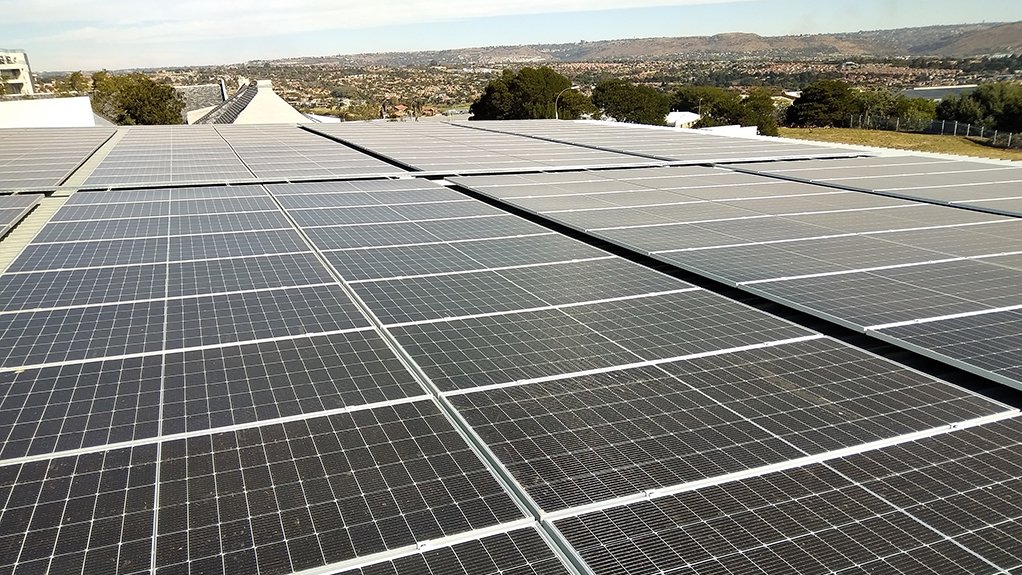Regulation important for a successful energy transition
South Africa has added almost 3.5 GW of private renewable power generation over 15 months between March 2022 and June 2023, but conflicting messaging from government creates uncertainty, Earth & Wire CEO and industry body South African Independent Power Producers Association chairperson Thomas Garner has said.
The transition requires regulation to ensure that South Africa optimises its use of, and investments in, infrastructure, and regulators must move faster to ensure the power grid is stable and utilities and municipalities are sustainable, says Stellenbosch University Centre for Renewable & Sustainable Energy Studies power system simulation chairperson Dr Bernard Bekker.
Both spoke during a seminar hosted by research and science umbrella nonprofit organisation National Science and Technology Forum (NSTF) this week.
"Technology disruption reaches an inflection point, which is evident in solar, wind and hydrogen electrolysis technologies, where falling costs lead to more demand and more product investment. This leads to a causal feedback loop that leads to more supply, more infrastructure investment and stronger and more capable networks," Garner explained.
Conversely, less demand, such as for fossil fuel-fired power results in lower revenue, less supply of supporting technologies and equipment and higher costs, which contributes to lower profits and less investment in infrastructure and weaker networks, as well as less public acceptance.
"We have seen more government support for older technologies and less for new technologies. This halts the network effects and supply of these new technologies, and leads to less infrastructure investment, but more private sector support," he added.
"There is less support from government departments that are responsible for driving the transition, and this becomes an obstacle to a just [energy] transition. Conversely, each building and household in South Africa can become a small power station.
"As an example, after the City of Cape Town allowed grid-connected users to sell excess power to the grid, there was a sudden revolution in the deployment of rooftop solar systems.
"All that is required to support the transition is to remove obstacles," Garner said.
Rooftop solar renewable energy systems provided 983 MW in March 2022, but this increased dramatically to 4 400 MW in June 2023. By comparison, the Renewable Energy Independent Power Producer Procurement Programme has only added about 6 GW in 12 years, he noted.
"Despite the challenges facing South Africa, some government departments are working to support the transition, others are resisting it or creating obstacles. The private sector has unleashed the transition, but it is an unplanned transition currently," he emphasised.
What is needed is a massive build of renewable energy and this will happen whether it is allowed by government or not. South Africa needs about 120 GW to 200 GW of solar, with up to 90 hours of battery energy storage, Garner said.
This new generation could also be government- and municipality-owned, as long as the focus remains on providing the cheapest power available to support the economy, as was the original intention of Eskom, he added.
REGULATIONS AND STABILITY
Meanwhile, an increase in renewables penetration leads to increasingly constrained grids and constrained grid flexibility in all countries that have seen significant increases in renewables penetration, Bekker highlighted.
"The photovoltaic market is booming but is mainly behind the metre and not visible to the system operator. A literature review of countries that have added significant amounts of renewable energy showed that, as they increased renewables, the transmission grid becomes constrained, and the electricity grid is not capable of handling the power flowing through it.
"Once a country reaches 20% renewables penetration, such as in China, Denmark, Germany and the US, the grid experiences constrained flexibility. An inflexible network cannot change quickly, but supply and demand must always be balanced in electricity grids, unless there is storage that can serve as an additional load on a node of the grid."
South Africa is adding a Koeberg's worth of renewable energy, or about 1.9 GW, each year to the grid, and there is a need for an updated policy document to help to coordinate the necessary investment, Bekker added.
South Africa is sitting at around 13% of its power each year being produced by renewable energy and is already sitting with a constrained transmission grid.
"If we build what the policy documents indicate, we will be closer to 50% by 2032 and thereby move into constrained flexibility. Renewables alone will not solve loadshedding, but rather a considered approach is needed," Bekker emphasised.
"Grids become constrained as renewables are added because they have not been designed to handle the bidirectional flows and the flows of power become difficult to predict," he said.
However, there are some novel solutions, such as building renewable energy plants closer to demand centres.
"All parts of the country have good renewable resources, but also there is more capacity to add renewables to the grids of cities than, for example, in the Northern Cape grid," he noted.
South Africa should also consider deploying different renewable power plants in one area, such as solar and wind power plants. Wind provides power at different times to solar, and solar power systems produce no power during the night. Combined plants would therefore better use the existing connection.
Further, municipalities stand to lose revenue as more households and companies generate more of their own power yet are also expected to be able to pay for power fed into the grid from such systems and invest in and maintain the grid.
However, the power produced by renewable systems in private companies and houses can decrease the cost of electricity for municipalities, as well as reduce the amount of power municipalities have to buy from Eskom. Additionally, generation closer to the point of consumption can reduce technical losses substantially.
"We need more detailed modelling to understand the bottlenecks, because it is expensive and long-duration to build new grids, and ten-year pricing predictions are needed to ensure viability and sustainability.
"Additionally, while regulators typically develop regulations after industries have innovated, accelerating the development of regulations will mean fewer problems in the future with legacy equipment that is not compatible with the new paradigm of renewable energy systems," he added.
Article Enquiry
Email Article
Save Article
Feedback
To advertise email advertising@creamermedia.co.za or click here
Comments
Press Office
Announcements
What's On
Subscribe to improve your user experience...
Option 1 (equivalent of R125 a month):
Receive a weekly copy of Creamer Media's Engineering News & Mining Weekly magazine
(print copy for those in South Africa and e-magazine for those outside of South Africa)
Receive daily email newsletters
Access to full search results
Access archive of magazine back copies
Access to Projects in Progress
Access to ONE Research Report of your choice in PDF format
Option 2 (equivalent of R375 a month):
All benefits from Option 1
PLUS
Access to Creamer Media's Research Channel Africa for ALL Research Reports, in PDF format, on various industrial and mining sectors
including Electricity; Water; Energy Transition; Hydrogen; Roads, Rail and Ports; Coal; Gold; Platinum; Battery Metals; etc.
Already a subscriber?
Forgotten your password?
Receive weekly copy of Creamer Media's Engineering News & Mining Weekly magazine (print copy for those in South Africa and e-magazine for those outside of South Africa)
➕
Recieve daily email newsletters
➕
Access to full search results
➕
Access archive of magazine back copies
➕
Access to Projects in Progress
➕
Access to ONE Research Report of your choice in PDF format
RESEARCH CHANNEL AFRICA
R4500 (equivalent of R375 a month)
SUBSCRIBEAll benefits from Option 1
➕
Access to Creamer Media's Research Channel Africa for ALL Research Reports on various industrial and mining sectors, in PDF format, including on:
Electricity
➕
Water
➕
Energy Transition
➕
Hydrogen
➕
Roads, Rail and Ports
➕
Coal
➕
Gold
➕
Platinum
➕
Battery Metals
➕
etc.
Receive all benefits from Option 1 or Option 2 delivered to numerous people at your company
➕
Multiple User names and Passwords for simultaneous log-ins
➕
Intranet integration access to all in your organisation

















